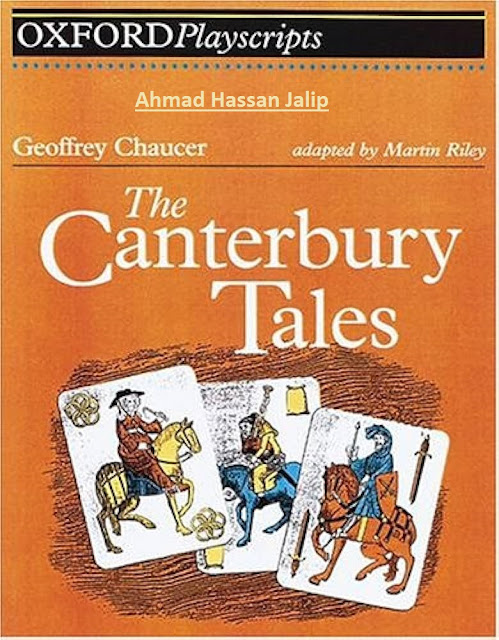"The Canterbury Tales" by Geoffrey Chaucer: A Medieval Masterpiece of Narrative Diversity and Social Commentary
 |
| The Canterbury Tales |
Geoffrey Chaucer's "The Canterbury Tales," written in the late 14th century, is one of the most celebrated and influential works of Middle English literature. This collection of stories, presented as a pilgrimage by a diverse group of travelers, provides a rich tapestry of characters and narratives that offer both a vivid snapshot of medieval English society and a timeless exploration of human nature, morality, and storytelling.
1. Historical Context
"The Canterbury Tales" was written during a period of significant cultural and social change in England. Chaucer lived through the Hundred Years' War and the Black Death, and his work reflects the shifting dynamics of medieval society, including the emergence of a middle class and the growing importance of vernacular literature.
2. Frame Narrative
The overarching structure of the work is a frame narrative. A group of 29 pilgrims, representing a wide cross-section of medieval society, gather at the Tabard Inn in Southwark, London, and agree to tell stories on their pilgrimage to the shrine of Saint Thomas Becket in Canterbury. Chaucer himself is one of the pilgrims, serving as the narrator. This frame narrative provides a rich backdrop for the individual tales.
3. Diversity of Characters and Stories
One of the most striking features of "The Canterbury Tales" is the diversity of characters and stories. The pilgrims come from various social classes and professions, including knights, clergy, merchants, and even a plowman. Each character's tale reflects their personality, social status, and perspective. This diversity allows Chaucer to offer a panoramic view of medieval society, from the noble and pious to the bawdy and comedic.
4. Themes and Social Commentary
"The Canterbury Tales" touches on a wide range of themes, including love, morality, chivalry, social satire, and the role of storytelling in society. Chaucer uses the tales to comment on the moral and ethical behavior of his contemporaries, often with a critical and satirical eye. Through humor and wit, he highlights the foibles and hypocrisies of individuals and institutions.
5. Language and Style
Chaucer's use of Middle English in "The Canterbury Tales" is a significant aspect of its historical and literary importance. He played a pivotal role in establishing Middle English as a legitimate literary language. While the language may pose challenges to modern readers, it also provides a fascinating glimpse into the linguistic evolution of English.
6. Legacy
"The Canterbury Tales" has had a lasting impact on English literature and storytelling. Chaucer's influence can be seen in later works by writers like Geoffrey Spenser, William Shakespeare, and even modern authors. The themes and characters of the tales remain relevant, and the work continues to be studied and adapted in various forms, including translations, adaptations, and adaptations into other media.
In conclusion, "The Canterbury Tales" by Geoffrey Chaucer is a timeless and multifaceted work that offers a window into the medieval world while exploring universal themes and human nature. Its combination of diverse characters, rich storytelling, and social commentary makes it a masterpiece of literature that continues to be celebrated and studied for its historical, cultural, and literary significance.





0 Comments